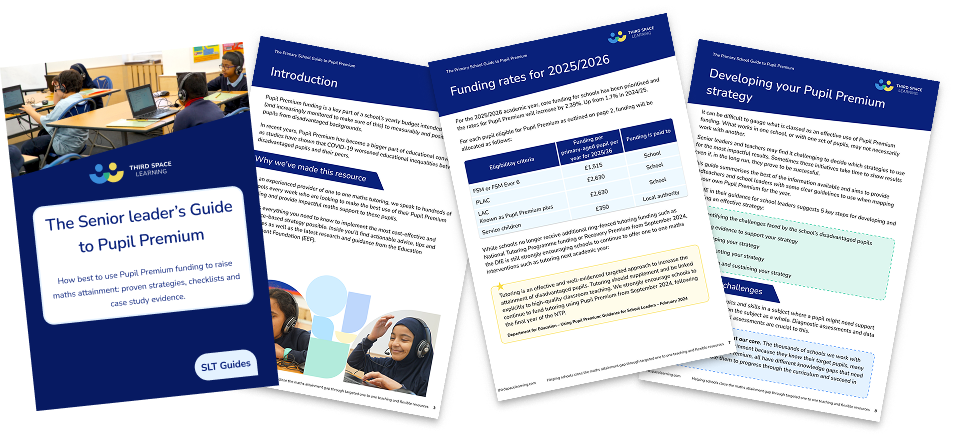Ofsted Pupil Premium Accountability 2025/26: Guidance For Schools
Ofsted’s focus on pupil premium spending is inevitable come inspection time. Judgments are based on more than just pupil premium spending. Under the new Ofsted Education Inspection Framework (EIF), inspectors will look for evidence that funding is spent on effective strategies and initiatives and that school leaders are monitoring and managing this well.
Ofsted consultation
This article is written as per the school inspection handbook that came into force on 16th September 2024.
From November, Ofsted are rolling out its new framework. Educational settings will be inspected under a new inspection framework and receive report cards instead of one word judgments.
You can read more about the new Ofsted framework 2025 here. This article will be updated to reflect the finalised guidance in late 2025.
Since becoming a key focus of Ofsted inspections, several previously outstanding schools have received a lower Ofsted grade largely due to the fact that inspectors felt their pupil premium grant was used ineffectively.
While there is no definitive formula to follow when preparing for an Ofsted pupil premium spending inspection, there is a guide to pupil premium funding and general patterns to follow.
Here you’ll find the steps to take that will help you prepare for Ofsted’s inspection of pupil premium spending in your school.
This article focuses on the guidance from Ofsted. For further information, it may also be worth referring to the school leaders’ guide to pupil premium and effective low cost pupil premium intervention ideas which include more information about guidance from the Department for Education and developing a strategy statement.
Discover the most successful pupil premium strategies used by schools across the UK — including recommendations from Education Consultant, John Dunford.
See also:
- Ofsted crib sheets
- A document about Third Space Learning for your school to share with Ofsted during inspections
The Senior Leader’s Guide to Pupil Premium
Informative and concise guides on the interventions that will have the biggest impact for the children in your care.
Download Free Now!Pupil premium: Ofsted’s advice
Ofsted offers four key recommendations for the use of pupil premium funding. Full details of the Ofsted accountability process for pupil premium spending can be found in the school inspection handbook (available on gov.uk).
But in summary:
- A pupil premium strategy for narrowing the attainment gap must be published on the school’s website.
- School leaders may provide inspectors with information about the level of additional funding received each year.
- How pupil premium is spent and how these spending decisions were made should be detailed clear.
- Schools must demonstrate to Ofsted the impact of pupil premium spending across the school.
In short, during an Ofsted deep dive schools must clearly demonstrate to Ofsted their pupil premium spending, strategy and its impact.
Governors are expected to be fully trained in pupil premium. During an Ofsted pupil premium inspection, governors should demonstrate an awareness of the school’s pupil premium strategy and the school leader’s plan to close the attainment gap for these pupils.
Answers could affect Ofsted’s leadership and management judgments and may ultimately impact a school’s Ofsted grade.
For guidance on how to develop a strong strategy statement that aligns with Ofsted’s expectations, make use of the template provided by the Department for Education and choose from the evidence-informed menu of approaches.
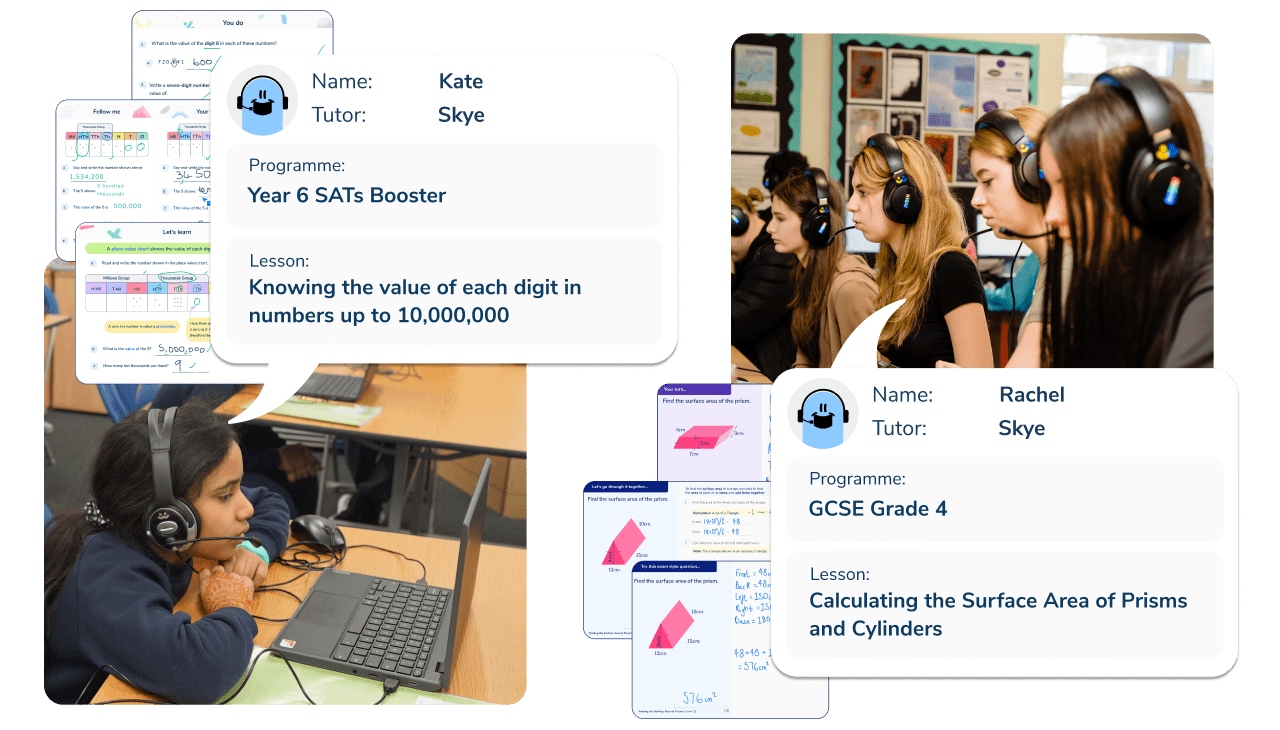
Meet Skye, the voice-based AI tutor making maths success possible for every student.
Built by teachers and maths experts, Skye uses the same pedagogy, curriculum and lesson structure as our traditional tutoring.
But, with more flexibility and a lower cost, schools can scale online maths tutoring to support every student who needs it.
Watch Skye in actionOfsted & pupil premium: Essential documents and research
As well as referring to the Ofsted inspection framework, school leaders should also consider the insights from the Education Endowment Foundation in their guide to pupil premium. This informative document outlines a five point plan to sustain an effective pupil premium strategy including:
- Identifying and diagnosing pupils’ needs — not all pupil premium children are low attainers
- Using evidence to support the school’s pupil premium strategy and spending
- Developing a pupil premium strategy, including quality first teaching
- Implementing the pupil premium strategy, including prioritising and focusing on key strategies
- Monitoring and evaluating pupil premium strategy — is it impactful? Where is the evidence?
Plan pupil premium spending around the needs of your school, not for Ofsted
Despite wanting to spend pupil premium according to how Ofsted determines a good use, leaders should focus on the context of their school. What is seen as ‘good pupil premium spending’ for one school may not be for another.
Geographical location, cohorts, attendance, attainment and funding should all be taken into consideration.
So, what can pupil premium be spent on? School leaders should consider a tiered approach, as suggested by the EEF, to balance the requirements of an effective spending strategy:
- High-quality teaching
- Targeted academic support, such as one to one or small group interventions
- Wider strategies, such as attendance, behaviour and social and emotional learning
While school leaders should always prioritise those policies that they think are right for their schools, heads will inevitably also be keeping an eye on what Ofsted might be looking for.
Schools with low attaining pupil premium children may consider interventions as a form of pupil premium spending, which when used carefully can be an effective use of funding.
Third Space Learning provides personalised online one-to-one maths interventions for the pupils who need it most. We have over a decade of experience raising attainment in maths, often working with disadvantaged pupils. Pupils sit an initial diagnostic assessment before their first session, helping to identify gaps in learning.
Up to 15 pupils attend one-to-one sessions simultaneously with maths specialist AI tutor Skye, who tailors lessons to each individual, helping to close the maths attainment gap — without adding to staff workload.
Regular progress reports are available to download for each pupil to help evidence the impact of the intervention both internally and externally.
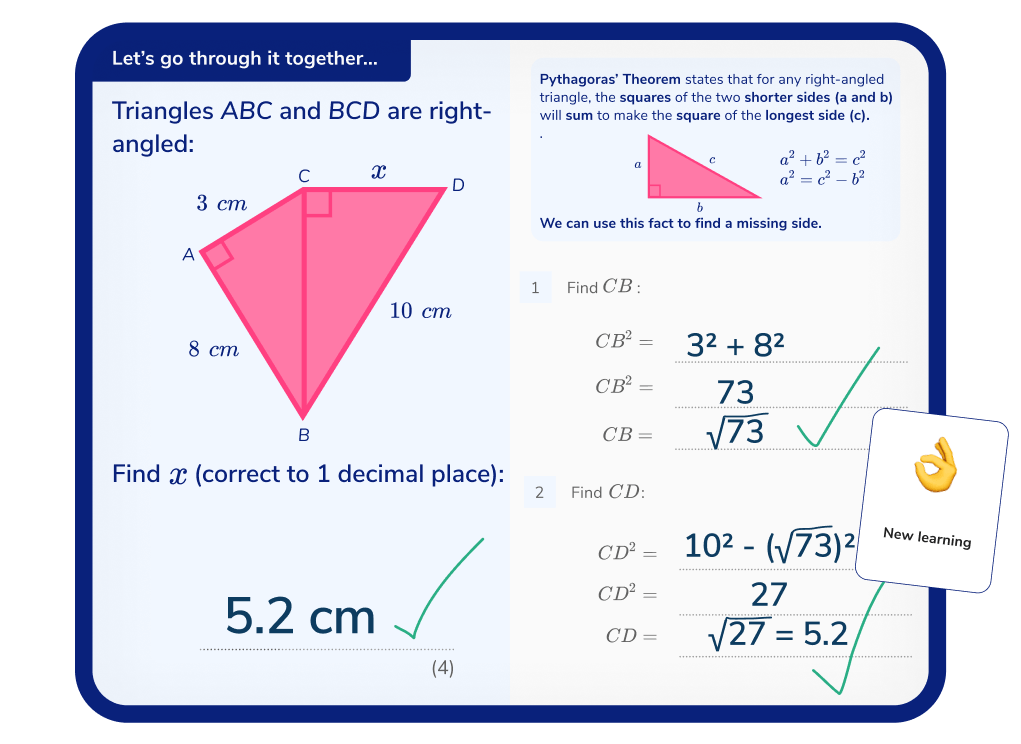
GCSE one-to-one maths session: Pythagoras’ Theorem
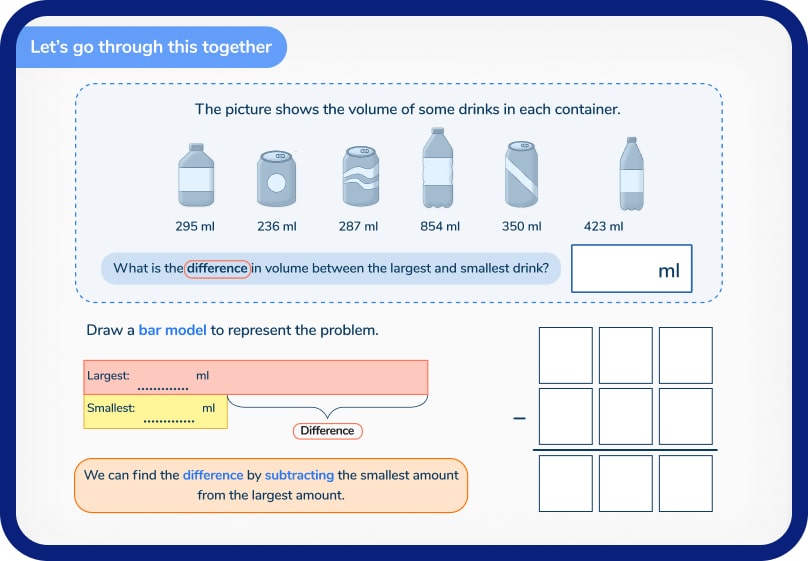
One-to-one online SATs revision lesson: reasoning with money
During our second day of the Ofsted inspection, one of the inspectors observed a Third Space learning sessions and was so impressed that she actually phoned Third Space Learning that day and introduced their one to one tutoring in her school.
Headteacher, Trent Church of England Primary School
How else will pupil premium be judged by Ofsted?
According to the new Ofsted Framework, and research into Ofsted deep dives, it’s unlikely they will look at internal data, but you will still likely be needing it.
It’s key to show the impact on those pupils who receive an allocation of pupil premium (pupils eligible for FSM, looked after children and also children whose parents serve in the armed forces) and that they are achieving well and their attainment is improving. The attainment gap should be closing, or at the very least, not widening.
Leadership with a focus on pupil premium
While each school is different, both Ofsted and experts have identified some common traits to those that use the funding well and these are usually reflective of a good school in general. A strong governing body with a high awareness of the pupil premium and how it is spent is key.
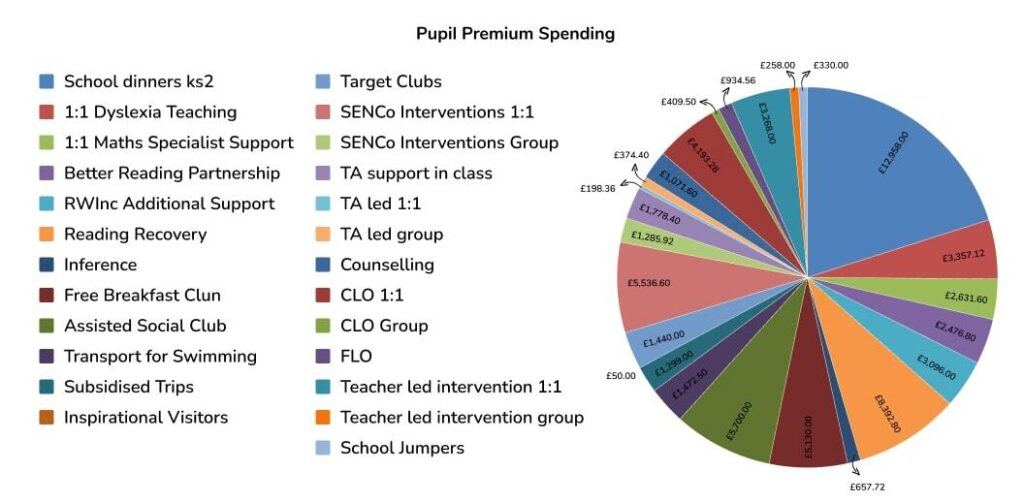
An example breakdown of pupil premium spending: St Eanswythes Primary School, Kent.
This might take the form of a designated ‘Pupil Premium champion’ on the board whose role is to oversee the spending and to increase awareness of it among fellow governors. This champion needs to question all pupil premium policies robustly and be prepared to challenge the senior leadership where necessary.
Similarly, a good pupil premium strategy is usually a reflection of good leadership more generally. Heads can appoint a member of their team to oversee the spending as well as making sure that they analyse the students’ data and performance consistently.
Read more: The 13 Most Common Ofsted Questions And Answers
Gather And Analyse Data For Impact
Use of data is essential. It is not enough to know how many students there are in receipt of the funding, they need to be individually recognised and their particular needs identified.
This helps schools to avoid the assumption that all such pupils are low achieving. If a disadvantaged child is achieving well, then the funding is there to help them achieve even more highly.
Once data on pupils’ performance is produced it needs to be analysed in order to explore what might be a direct result of pupil premium spending. This requires regular reviews of impact, both internal and external.
This data is intended to improve school leaders’ knowledge of their pupil premium children and spending only – Ofsted inspectors will not ask for these records themselves.
Carefully compare pupils in receipt of pupil premium, and avoid stereotypes
Ofsted is particularly keen to check that schools are not underestimating or stereotyping disadvantaged students. The Ofsted School Inspections Handbook notes that inspectors will be investigating the extent to which leaders’ and managers’ high ambitions are for all pupils, including those who are harder to reach.
This includes ensuring that practices such as ‘off-rolling’ do not take place and that the way the school uses the pupil premium is founded on good evidence.’ It extends to any assumptions that ‘pupil premium’ is a synonym for special education needs, or that ‘free school meals’ has any negative connotations.
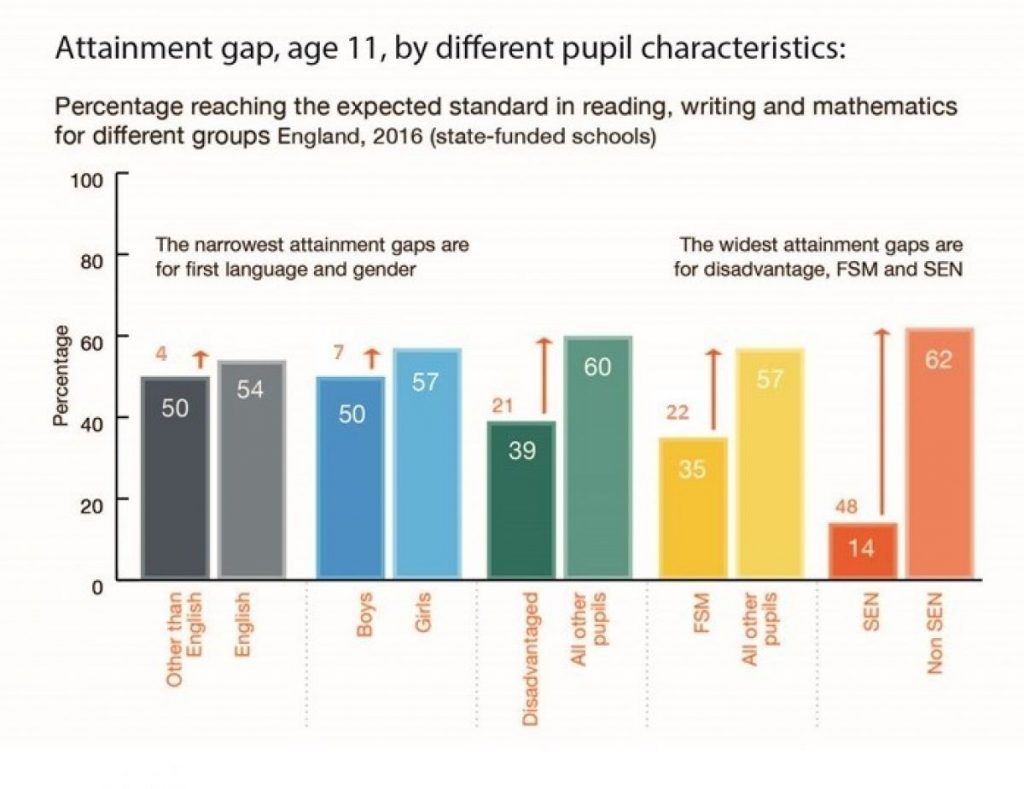
Schools need to compare the performance of disadvantaged pupils not to other eligible pupils nationally, but to all pupils, especially those within school, and adapt their pupil premium strategy accordingly.
For instance, in many London boroughs disadvantaged pupils perform significantly better than the national average across all pupils, reflecting the high benchmarks that have been set in some inner city areas. In fact, when looking for best practice, schools can do worse than look to London for ideas; of the top 25 areas doing best for narrowing the gap, 23 of them are boroughs in the capital.
Ofsted and pupil premium – what to avoid
Low expectations of the pupil premium cohort is the principle issue from Ofsted’s perspective, but there are other elements of bad practice that will raise red flags.
These include:
- Uses of pupil premium funding that have already been shown to be inefficient or even to have negative impacts, e.g. repeat-a-year or setting and streaming strategies.
- The indiscriminate use of funds on catch up interventions that can be both expensive and inefficient, such as using the money on teaching assistants who do not receive adequate training and whose performances are not managed well.
- Indefinite one-to-one tuition and booster classes that do not relate to class training and are not audited are also inefficient use of funds.
As you can see, most of what Ofsted is looking for in terms of pupil premium accountability is well within your capacity to establish or modify.
Given the wide variety of things to make ready or keep track of before an inspection, effective use of the pupil premium in your primary school can seem like an afterthought. But it’s a key part of what inspectors are looking at, and now you have the tools to make certain of it!
Read more:
- How Will Ofsted Inspect Your Tutoring?
- Maximise The Impact of Your Pupil Premium Funding At Primary School
- How One-to-One Interventions Provide Long Term Results in Maths
- The Most Common Ofsted Deep Dive Questions 2024: With SLT Recommendations For How To Answer And Prepare For Them
- Tutoring In School: 12 Strategies To Make It Highly Effective For All Your Students
Further important reading for senior leaders:
DO YOU HAVE STUDENTS WHO NEED MORE SUPPORT IN MATHS?
Skye – our AI maths tutor built by teachers – gives students personalised one-to-one lessons that address learning gaps and build confidence.
Since 2013 we’ve taught over 2 million hours of maths lessons to more than 170,000 students to help them become fluent, able mathematicians.
Explore our AI maths tutoring or find out about one to one tuition for your school.



